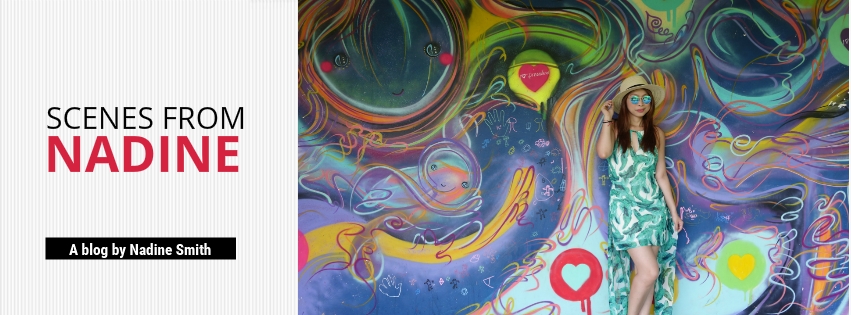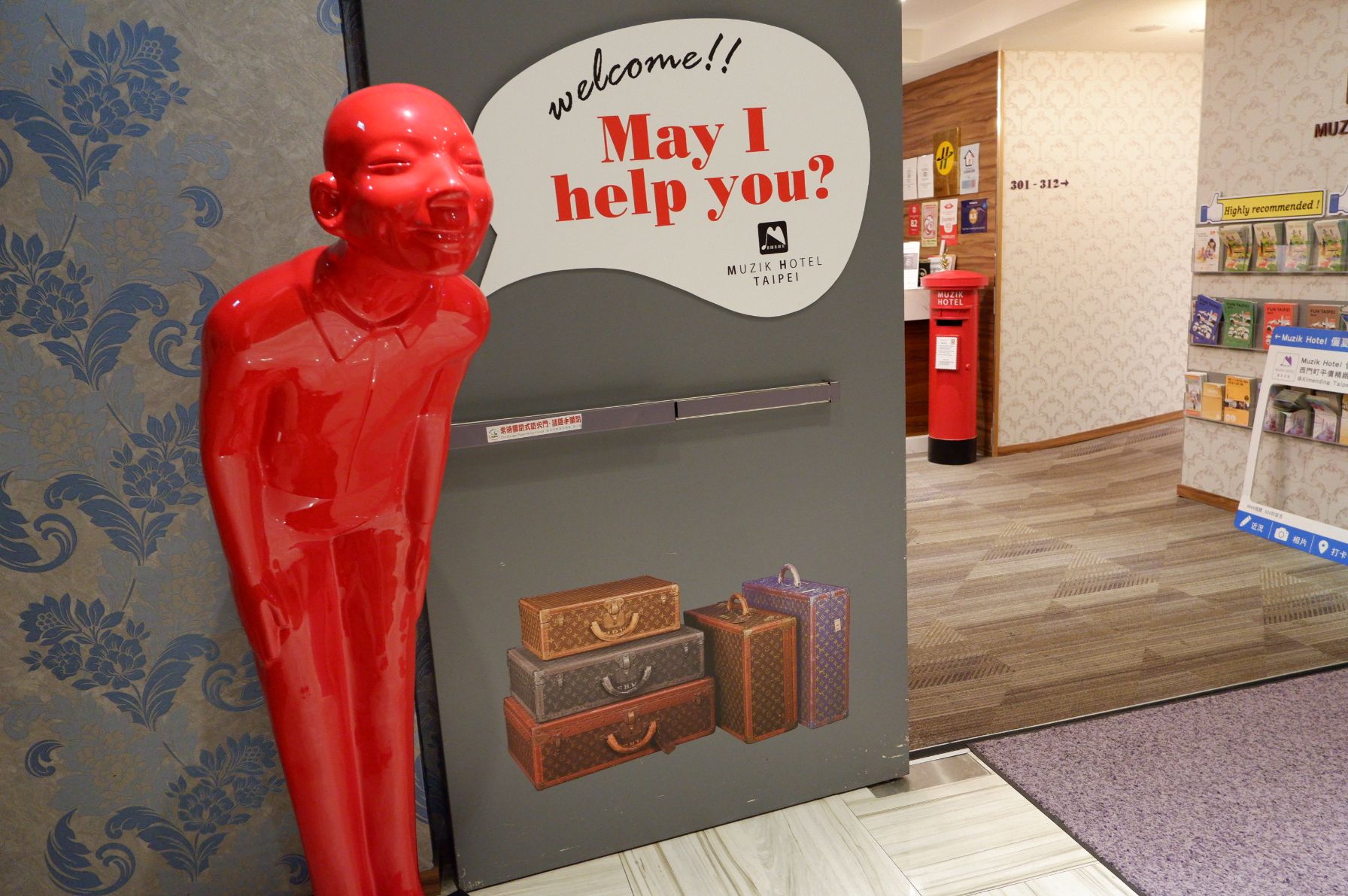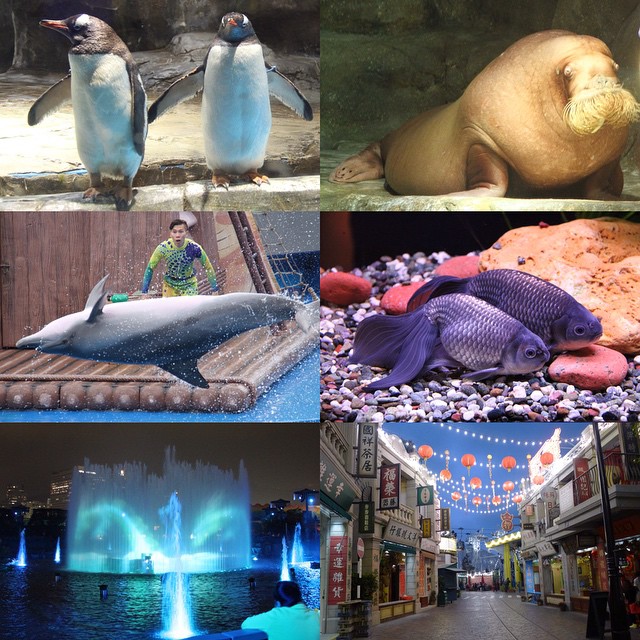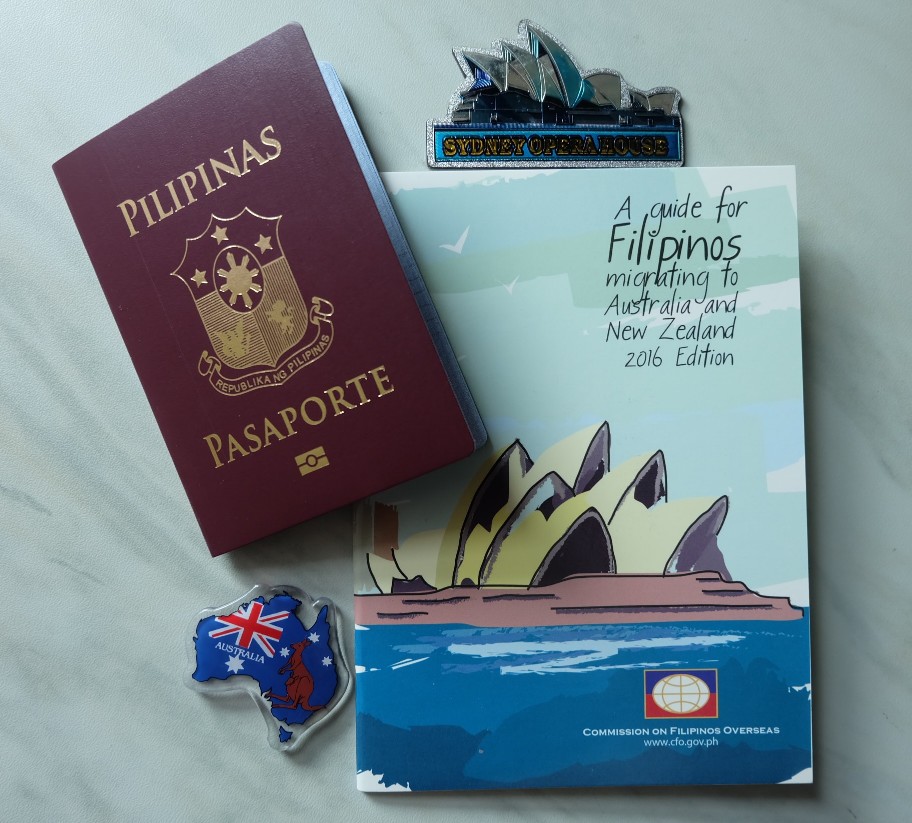Straight from our quick stroll around Truc Bach Lake, Mike and I — together with our student guides Huyen and Phuong from Hanoi E-buddies — went to the Vietnam Museum of Ethnology, one of the top-rated museums in Hanoi. The museum, which was established in 1997, exhibits the art, culture, religion, and architecture of the ethnic groups of Vietnam.
The museum has three main exhibition areas:
- The Bronze Drum building – which presents the way of life of the various ethnic groups
- The Southeast Asia exhibition area – which showcases the religion, culture, and art of Southeast Asian nations
- The outdoor display area – which displays the common traditional architectural style of Vietnam’s ethnic groups

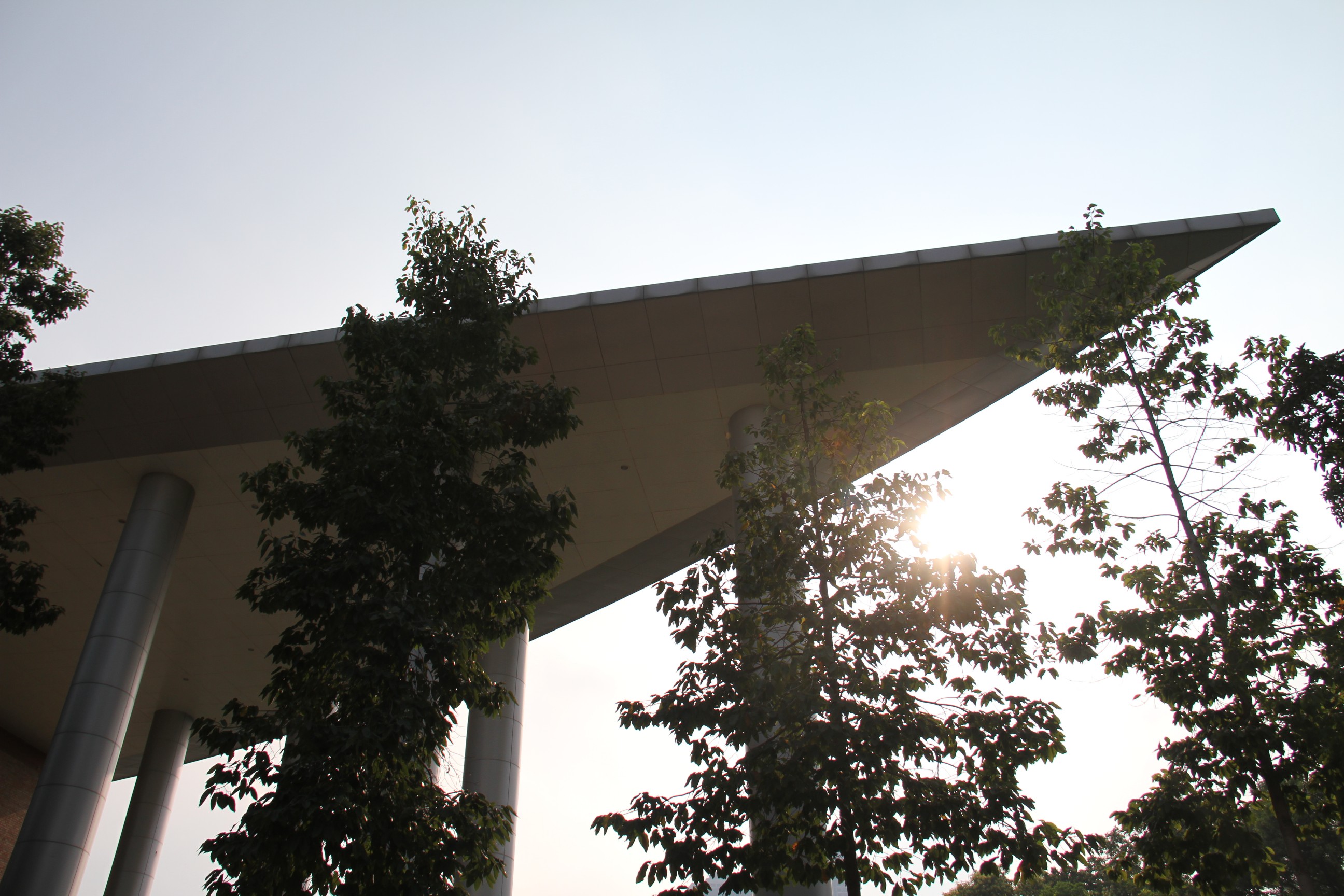
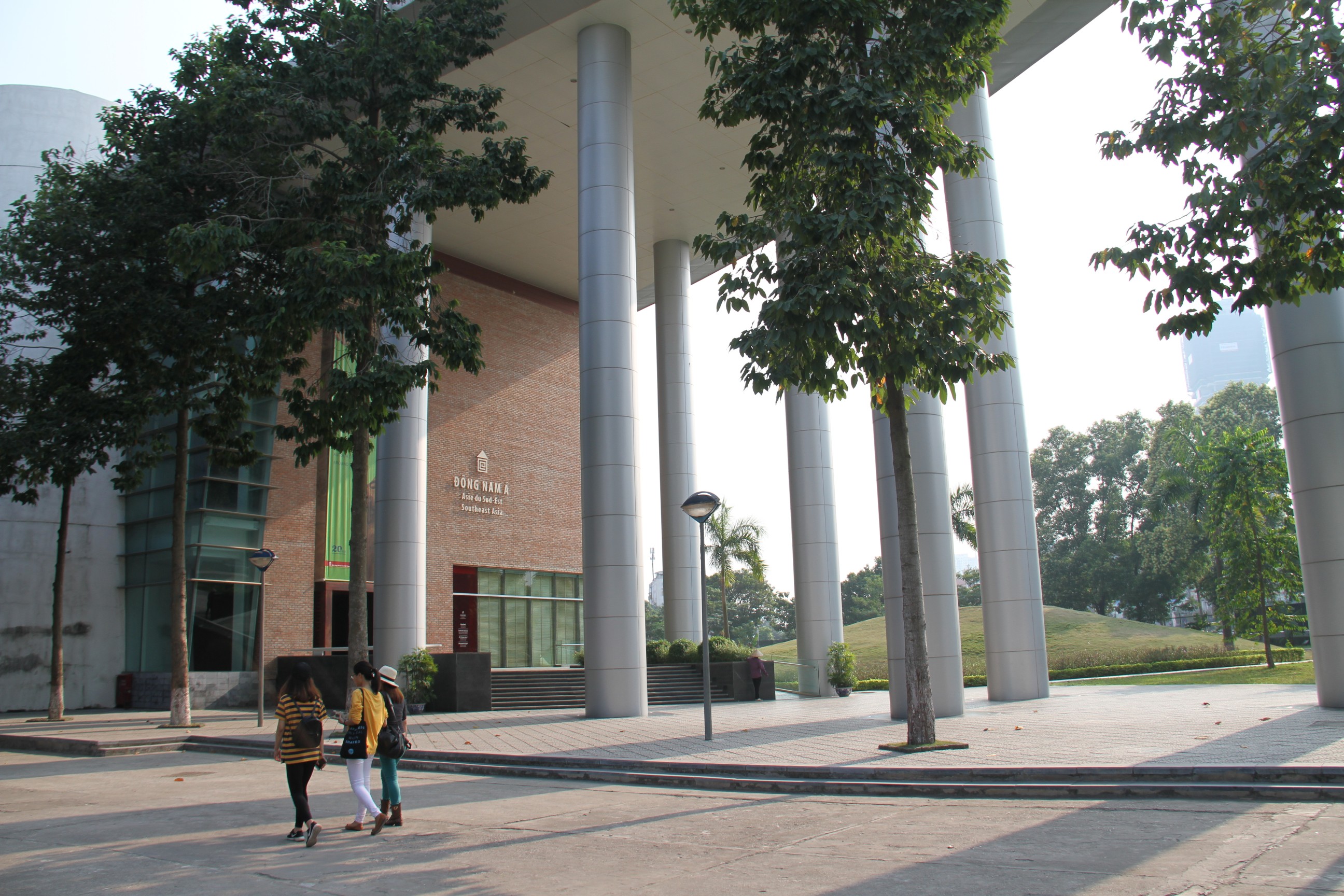
We skipped the Bronze Drum building and the Southeast Asia exhibition area and and went straight to explore the outdoor display area. It was quite interesting to see where the traditional Vietnamese families used to live in!
Nha Cham House
The Cham House, which was the first house we visited, is actually a family compound.
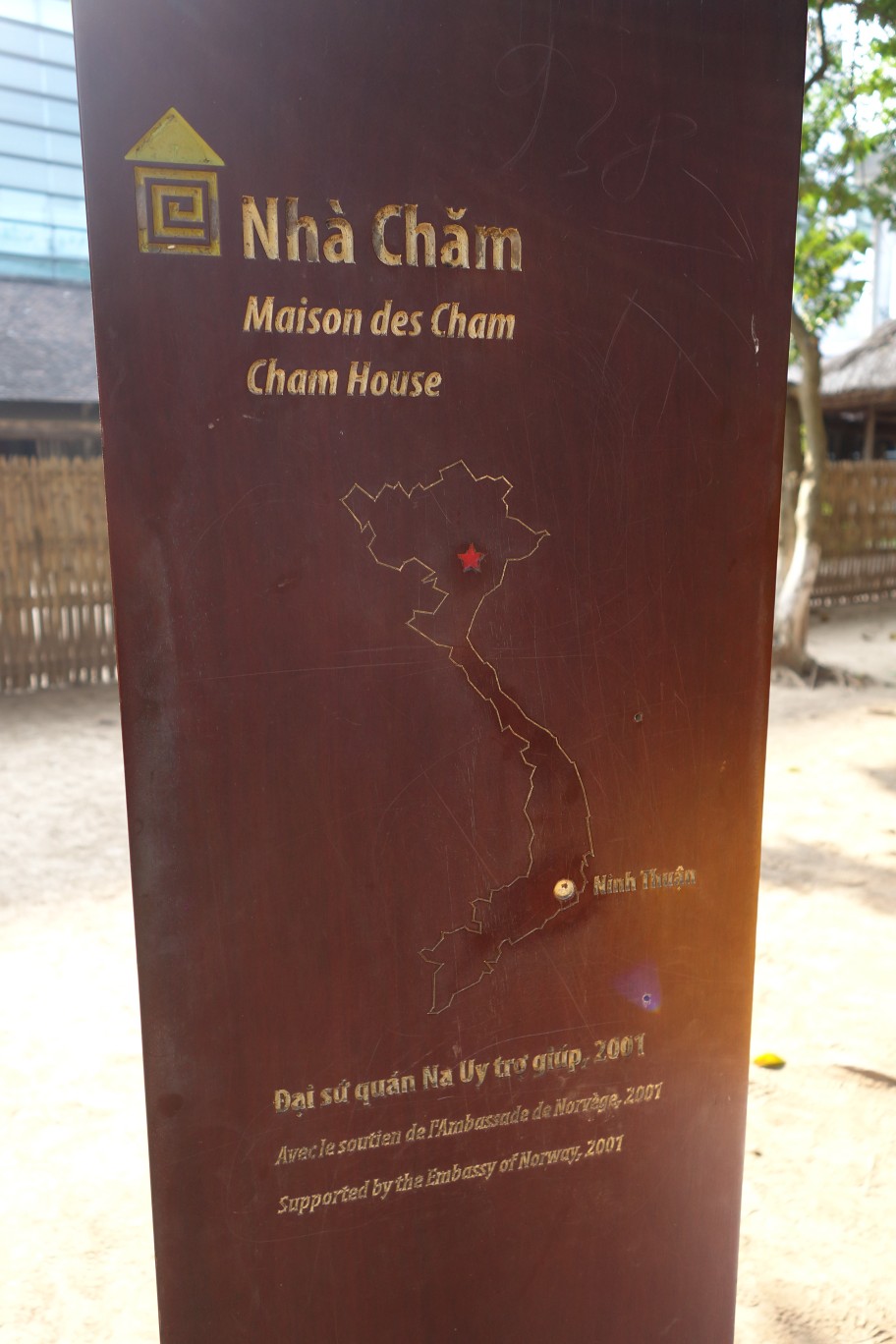
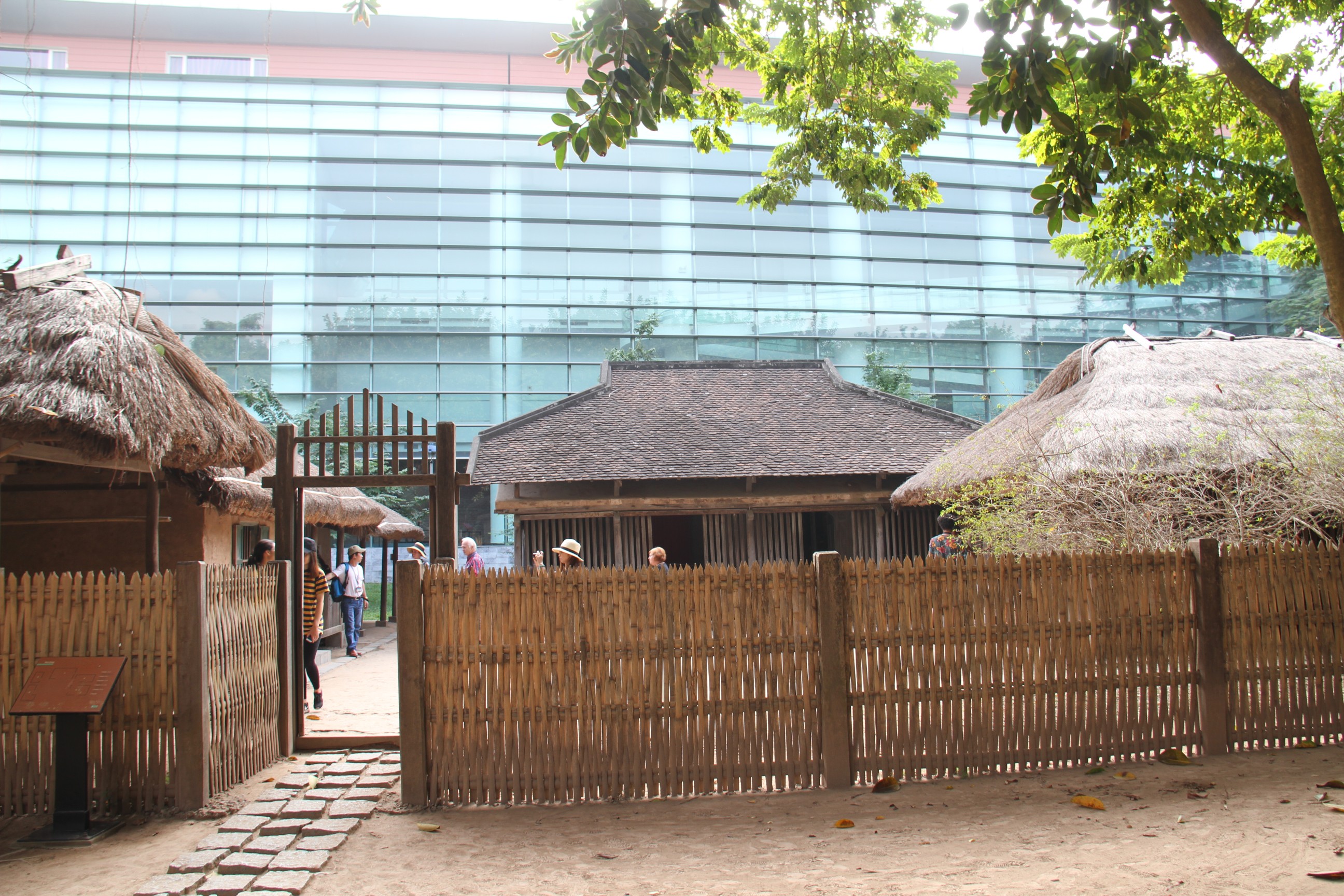
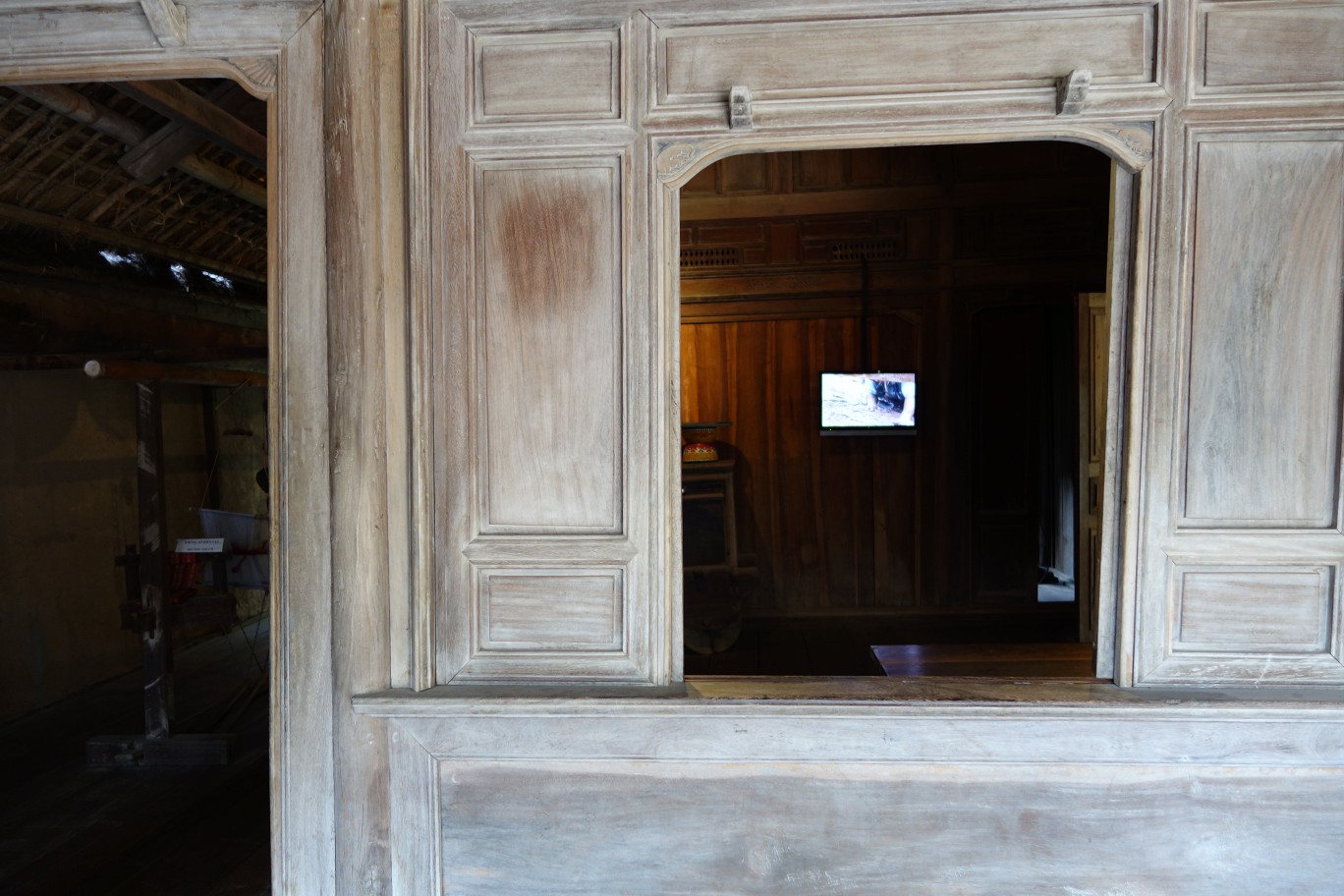
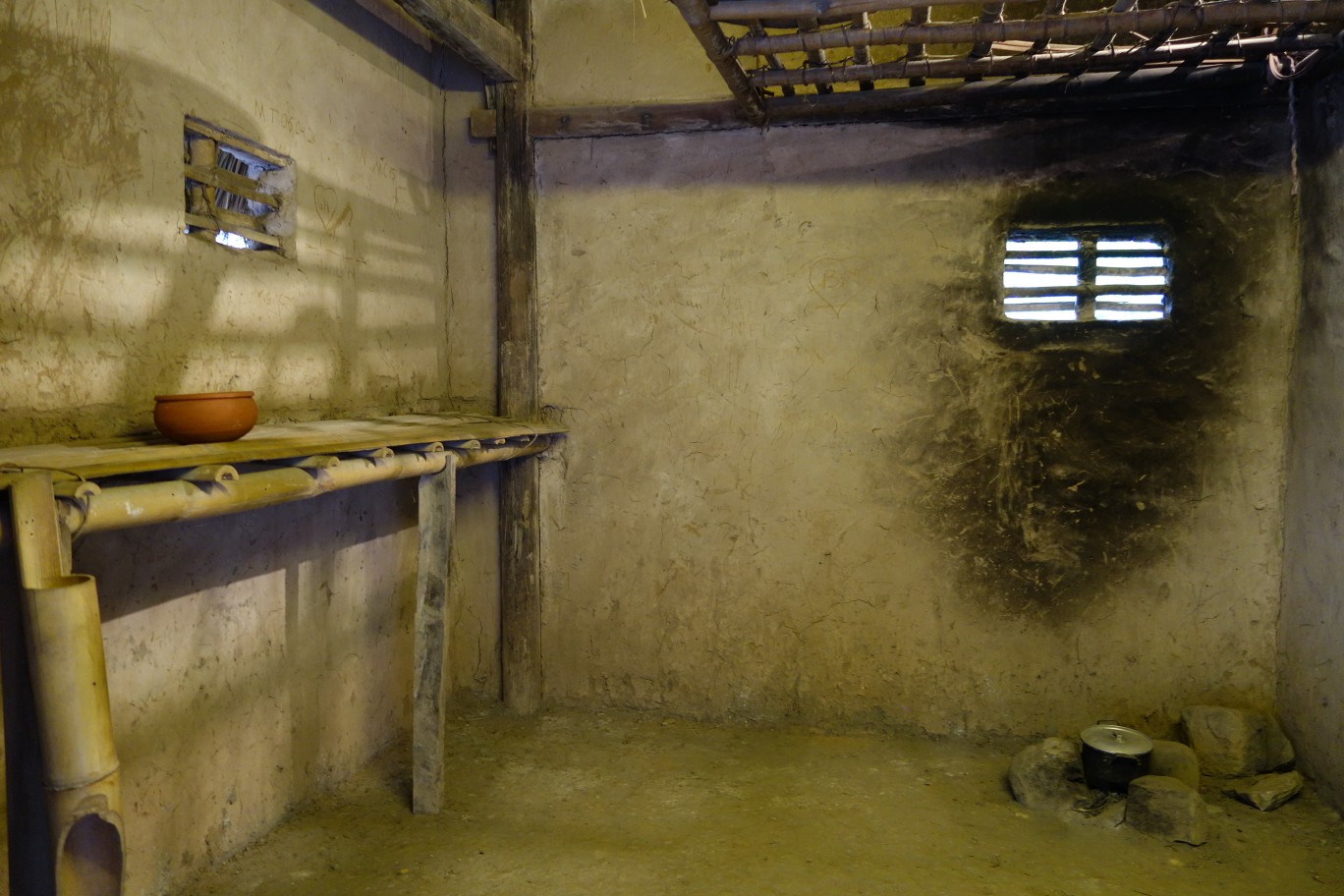
The kitchen is the very first house built in the family compound. The kitchen symbolizes family life, which is why in wedding ceremonies, the groom is required to first look in the direction of the kitchen before entering the house and participating in the rituals.
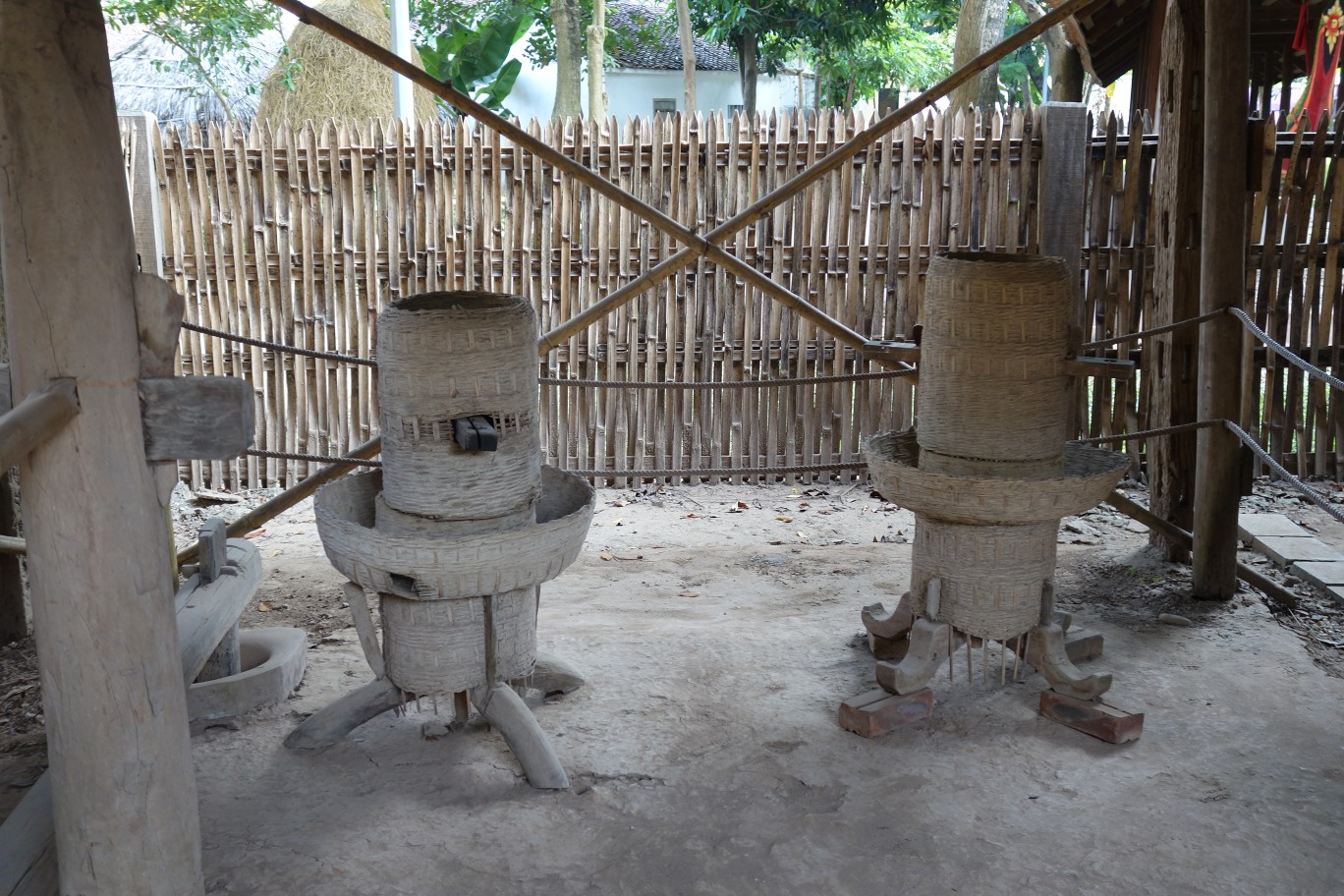
These stones, which are used for cooking, are regarded as signs of life and the place where the kitchen God resides. At least once every three months or when the children in the family are sick, these stones are arranged and the kitchen God is worshipped, and offerings are made.

In front of the Cham House is a water puppet show area which stands on a placid lake surrounded by greenery.
Nha Viet House
Next stop was the Viet House, which originally belonged to a wealthy family in the early 20th century, who was known as Mrs. Hoi.
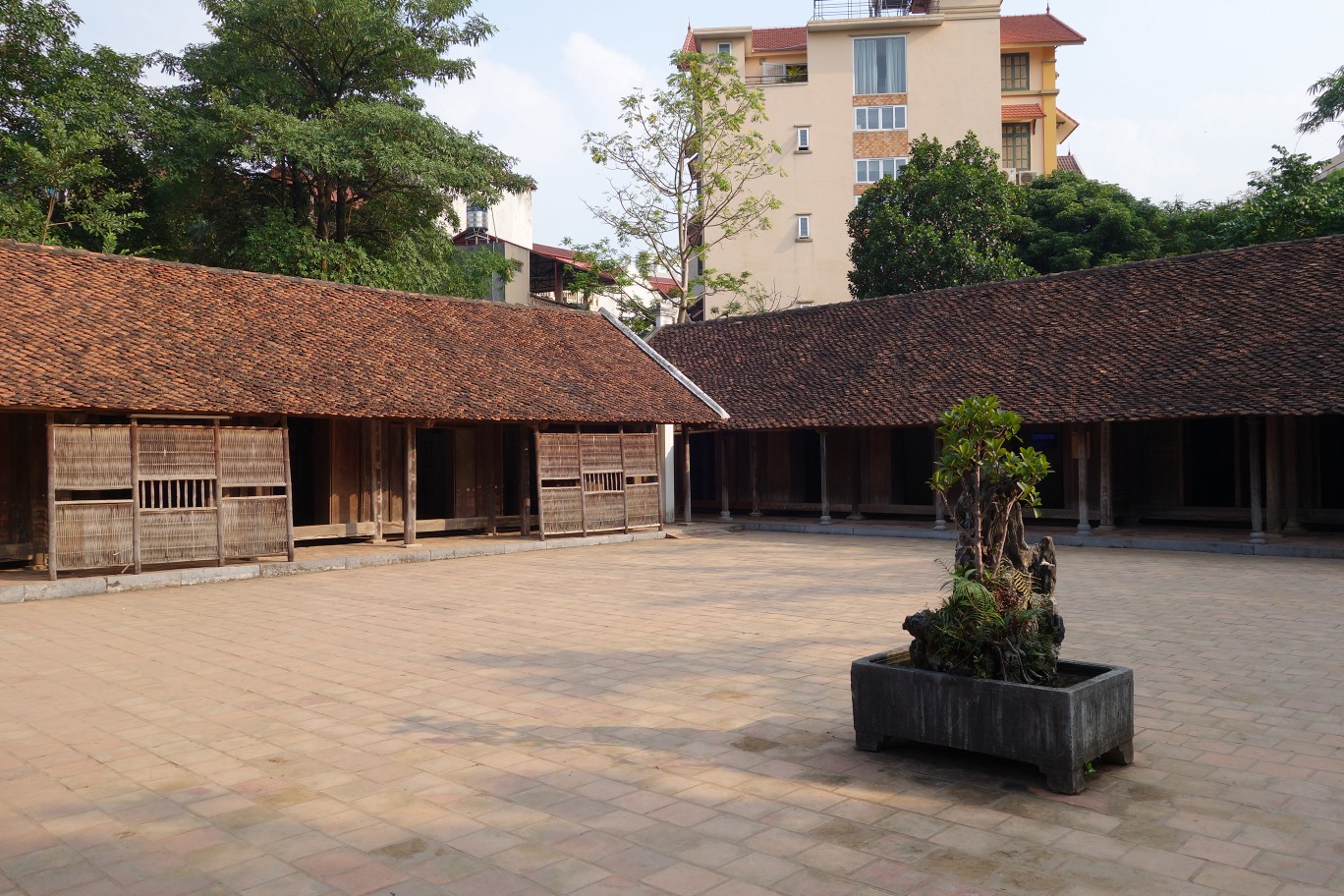
When it was built, the original house had 5 rooms, including a spacious living room, which was later on passed down to Mrs. Hoi’s eldest son, then to her grandson and great-eldest grandson.
The kitchen and dining room were shared by the entire family.
Inside the Viet house, guests wills find the various contraptions that the family used for their daily tasks.

In the living room, visitors will see an altar where the family used to worship their ancestors.
Nha rong Bana House (Communal House)
This was my favorite house of all because it required some effort and sense of adventure to get to! The communal house is said to be the most important building in a Bahnar village. This is where the men of the village held their meetings. To get to the top of the communal house, we had to climb up these steep stairs! Fun!
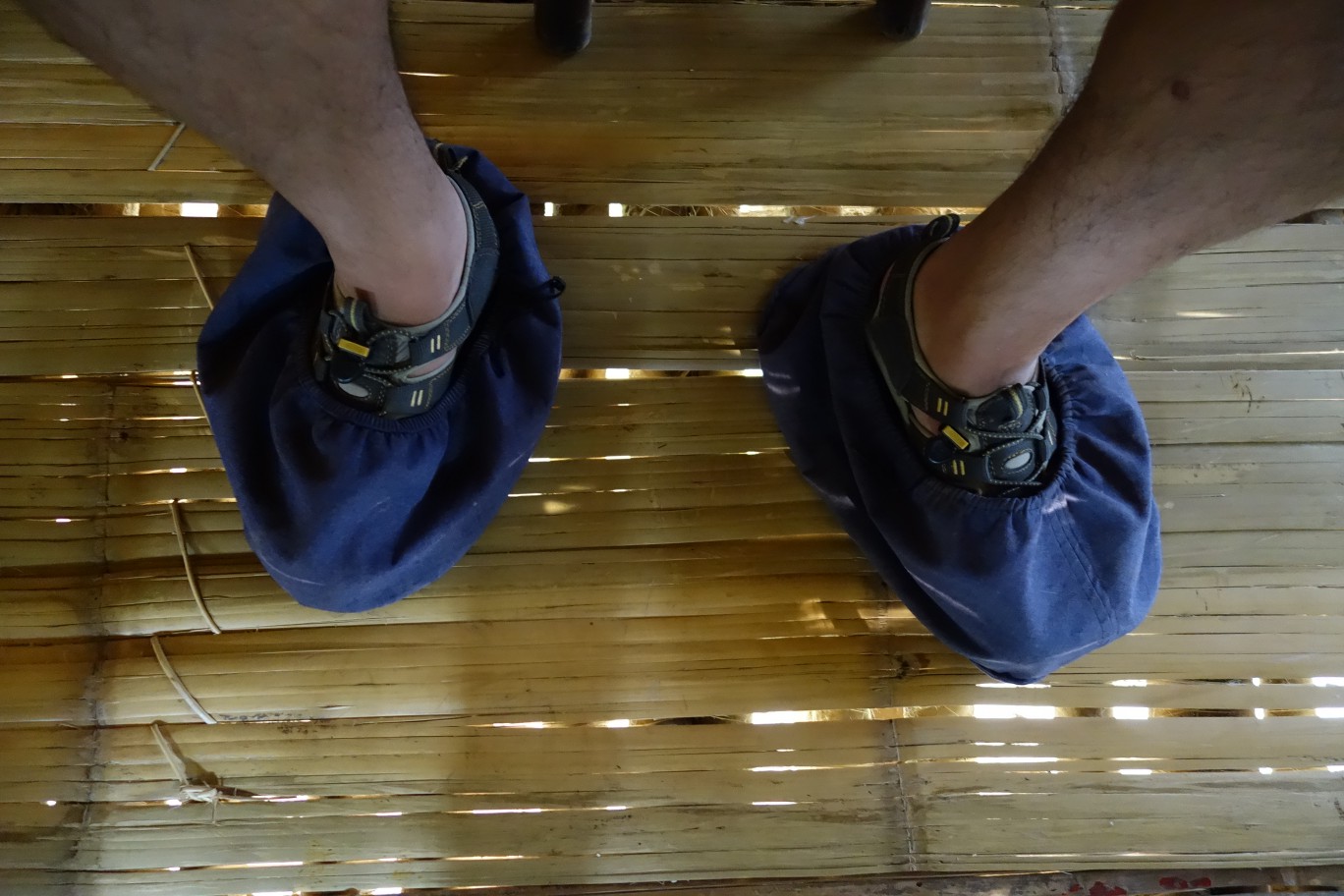
To keep the house clean, visitors are required to put on these protective ‘shoe socks’ before entering.
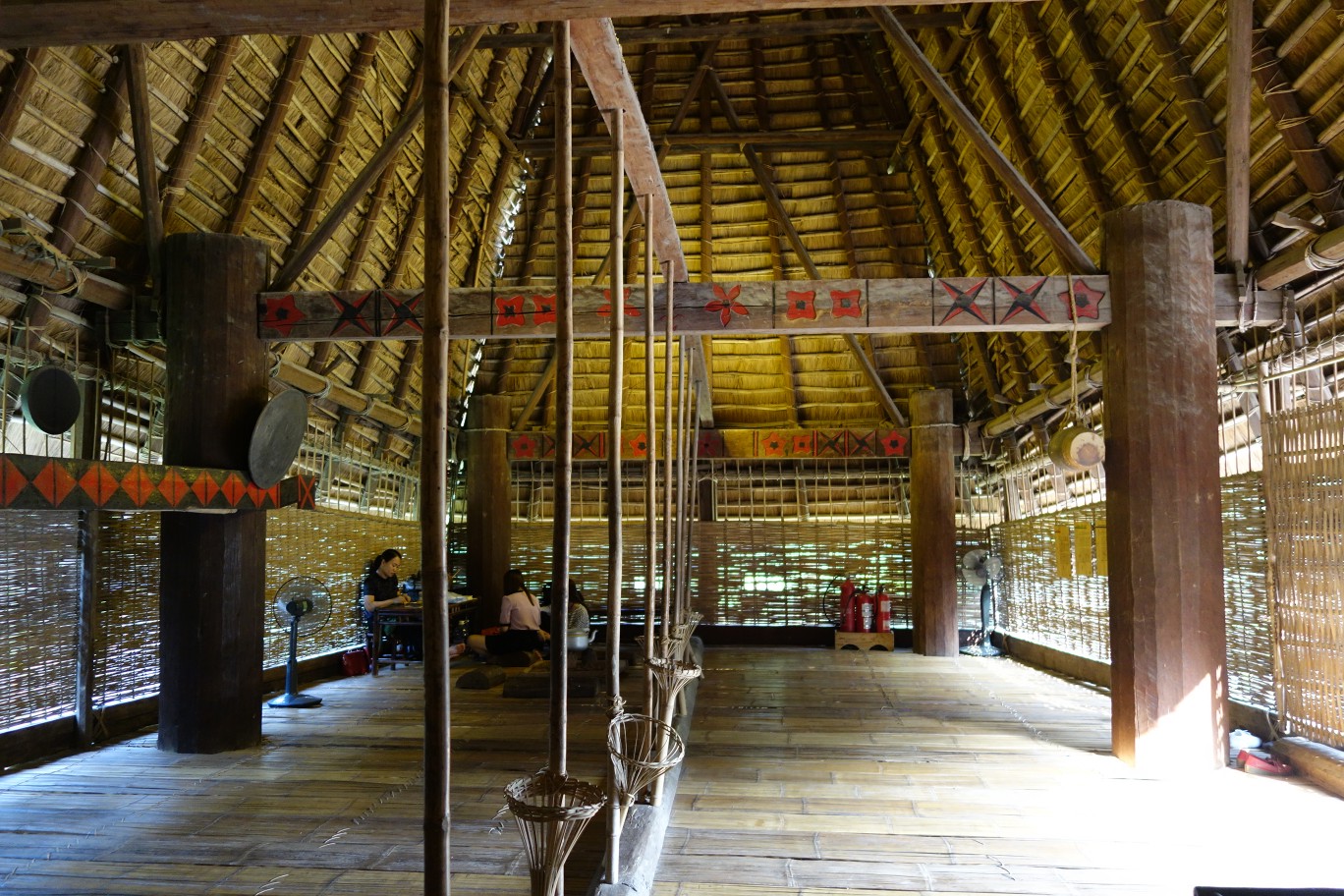
This house was not only spacious, but it also had very high ceilings.
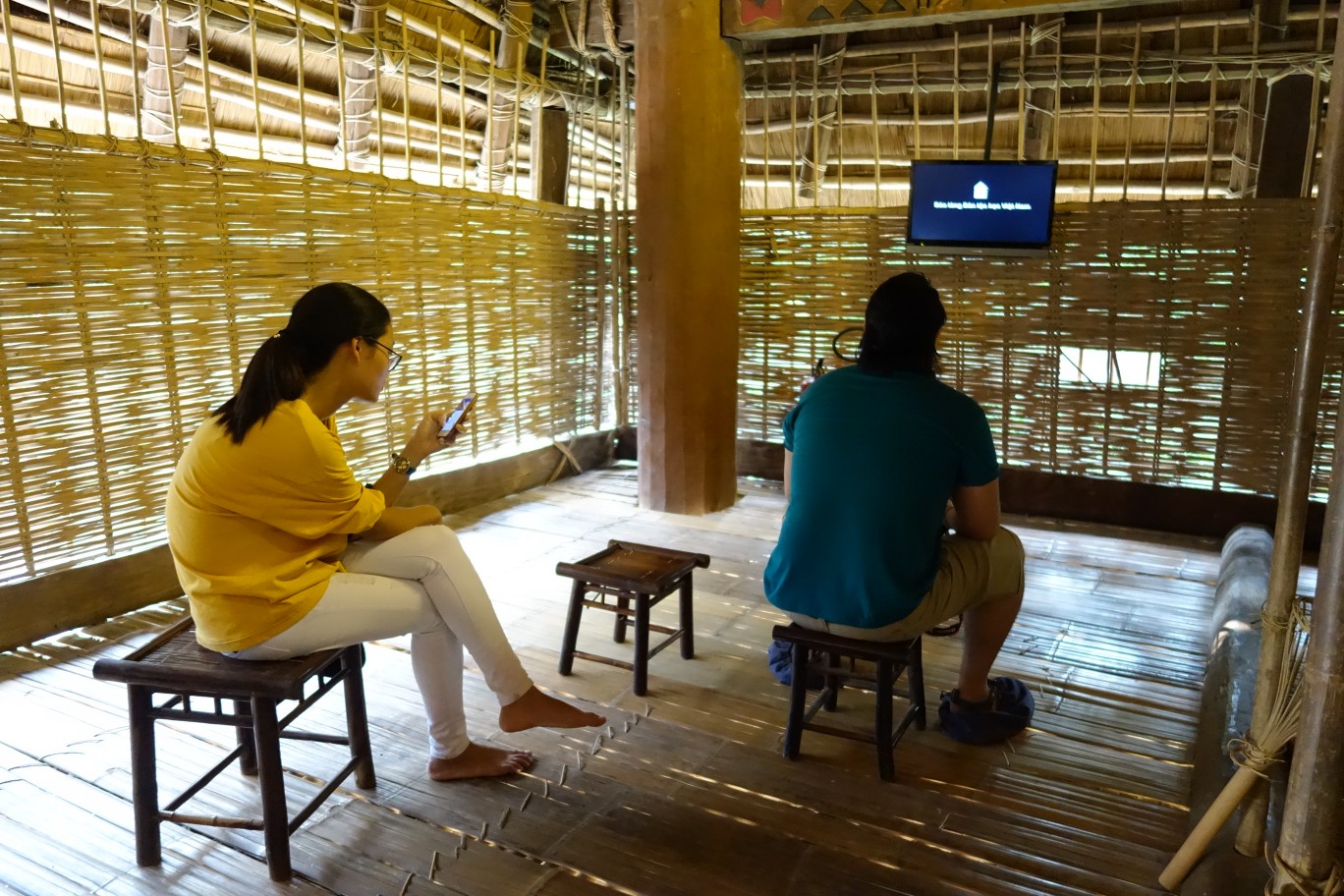
You can learn more about this house by watching a video playing on the TV screen mounted on the wall.
Here’s how they used to boil water back then!

Nha Ede
Whenever we visited new houses, Huyen would ask us, “Do you think this house is for males or females?” When we saw this particular house, I knew immediately that this was a house for women. Why? Spot the boobies!
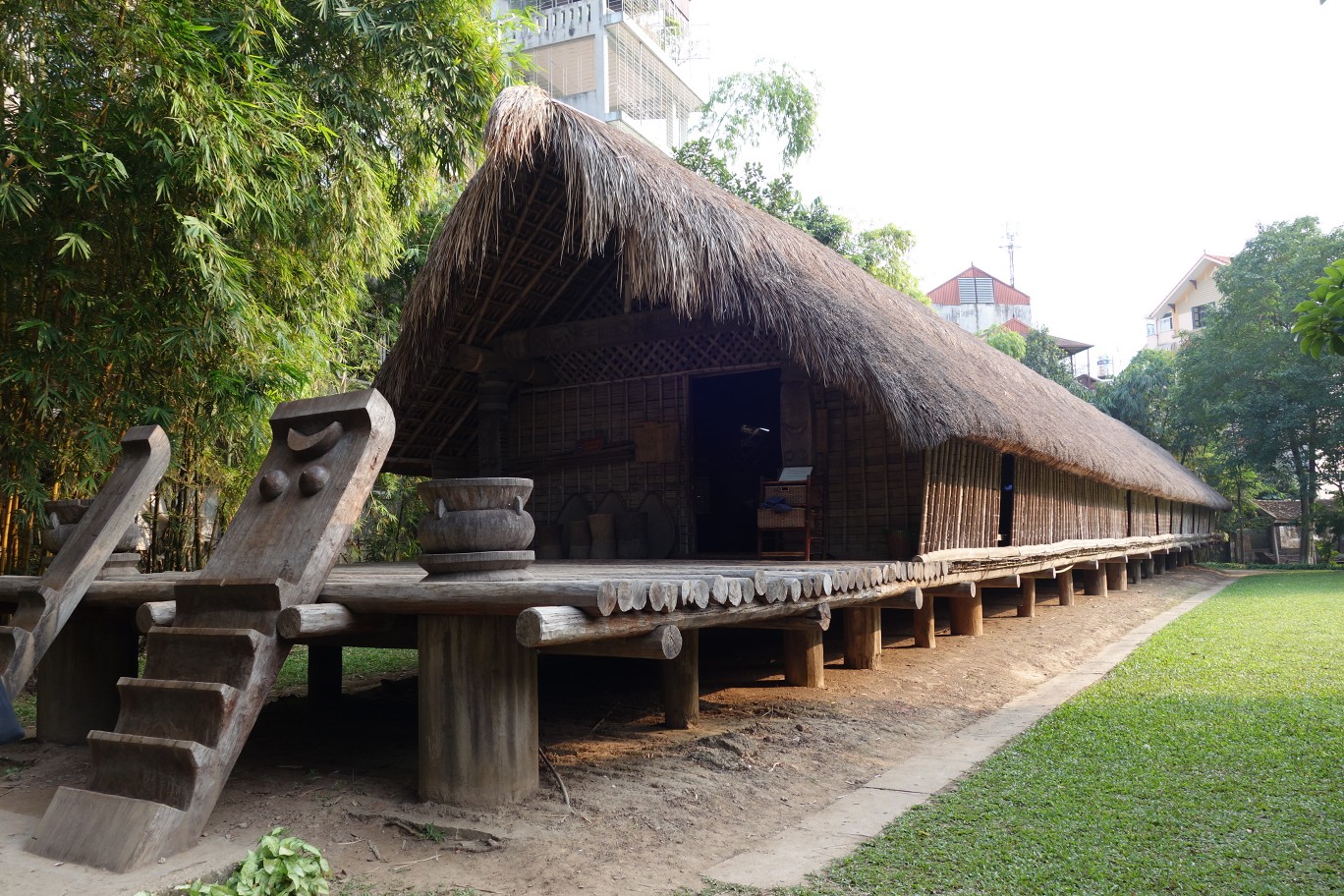
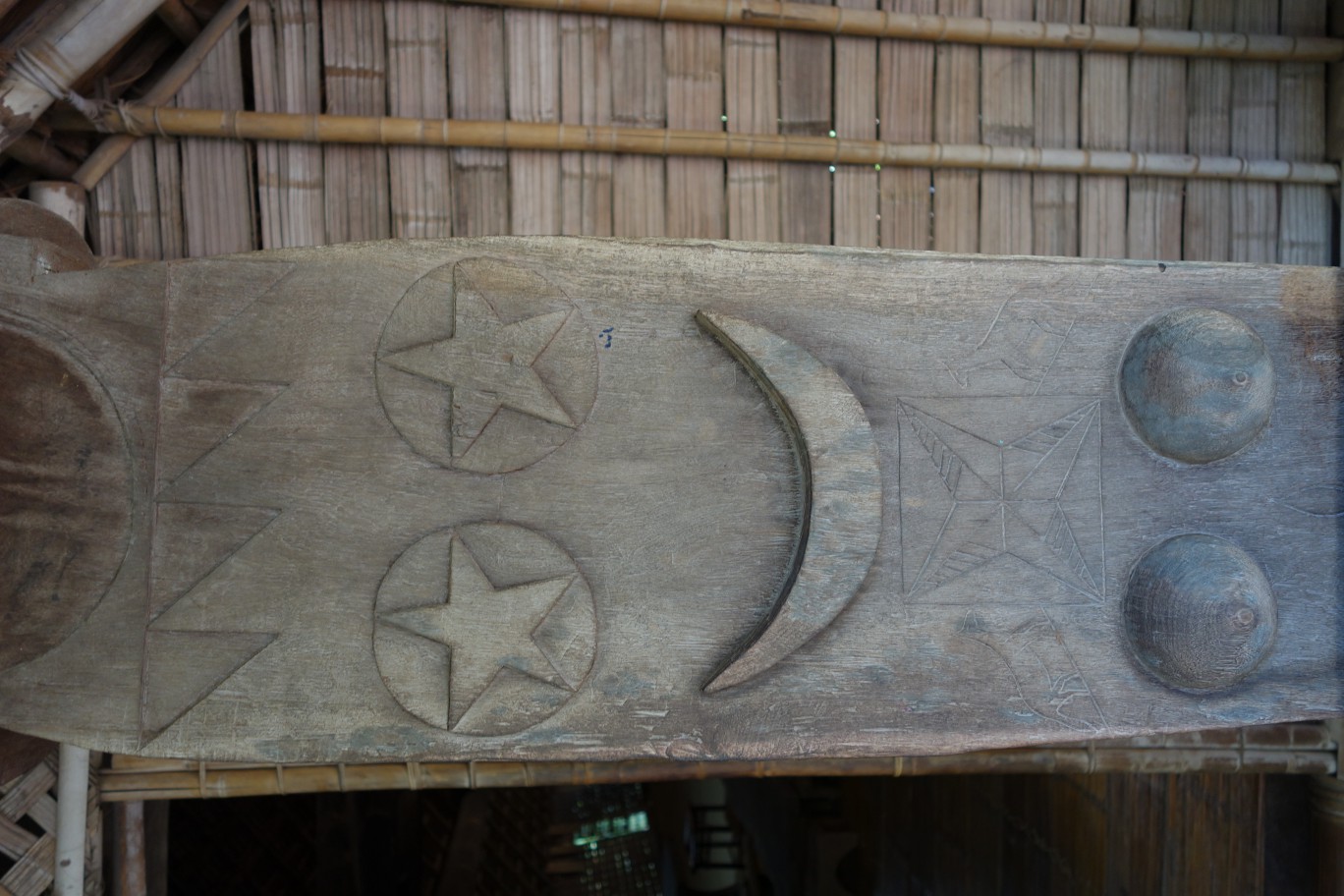
Can you find the hidden boobies on this one?
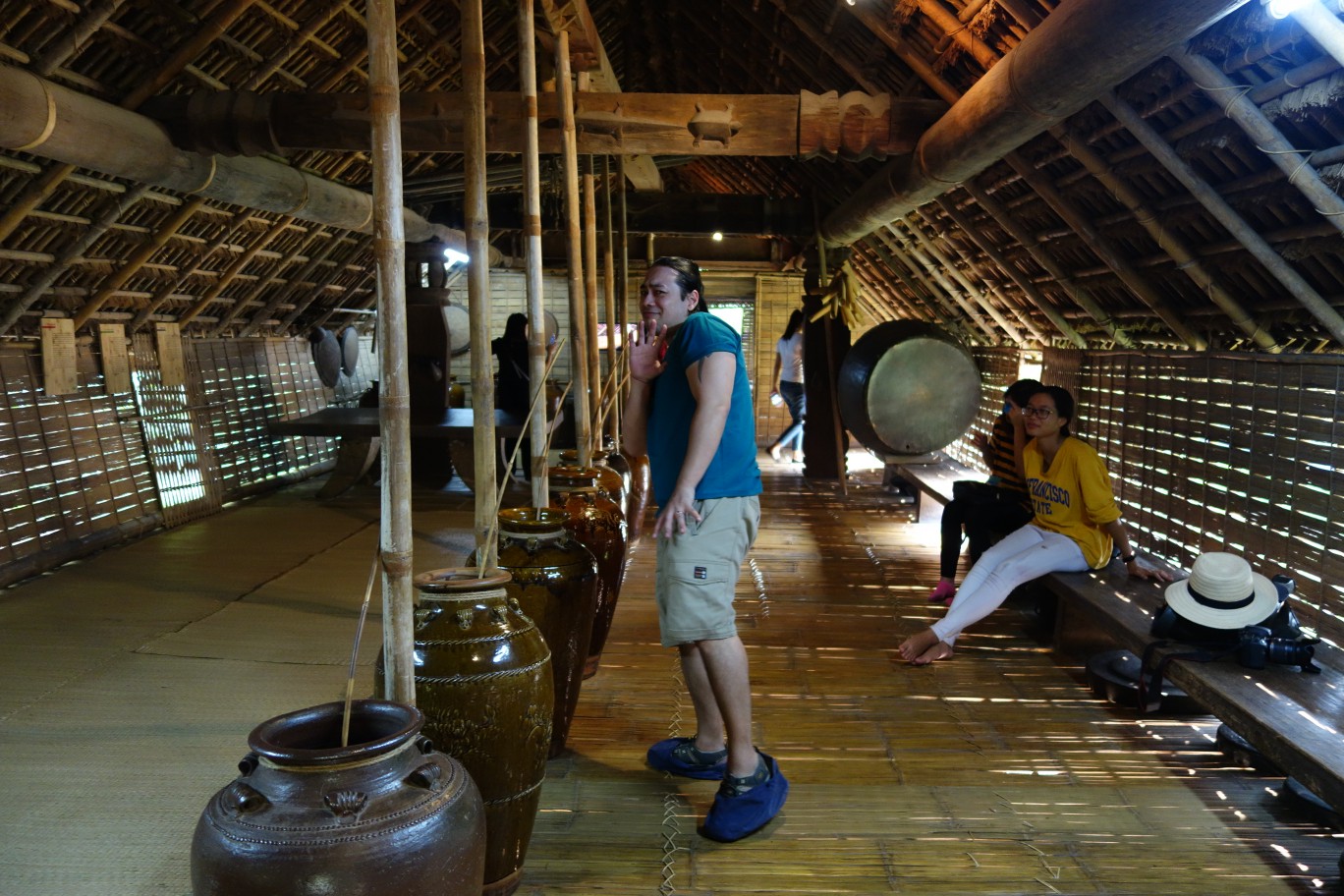
While the communal house was high and tall, the Ede House was wide and long.
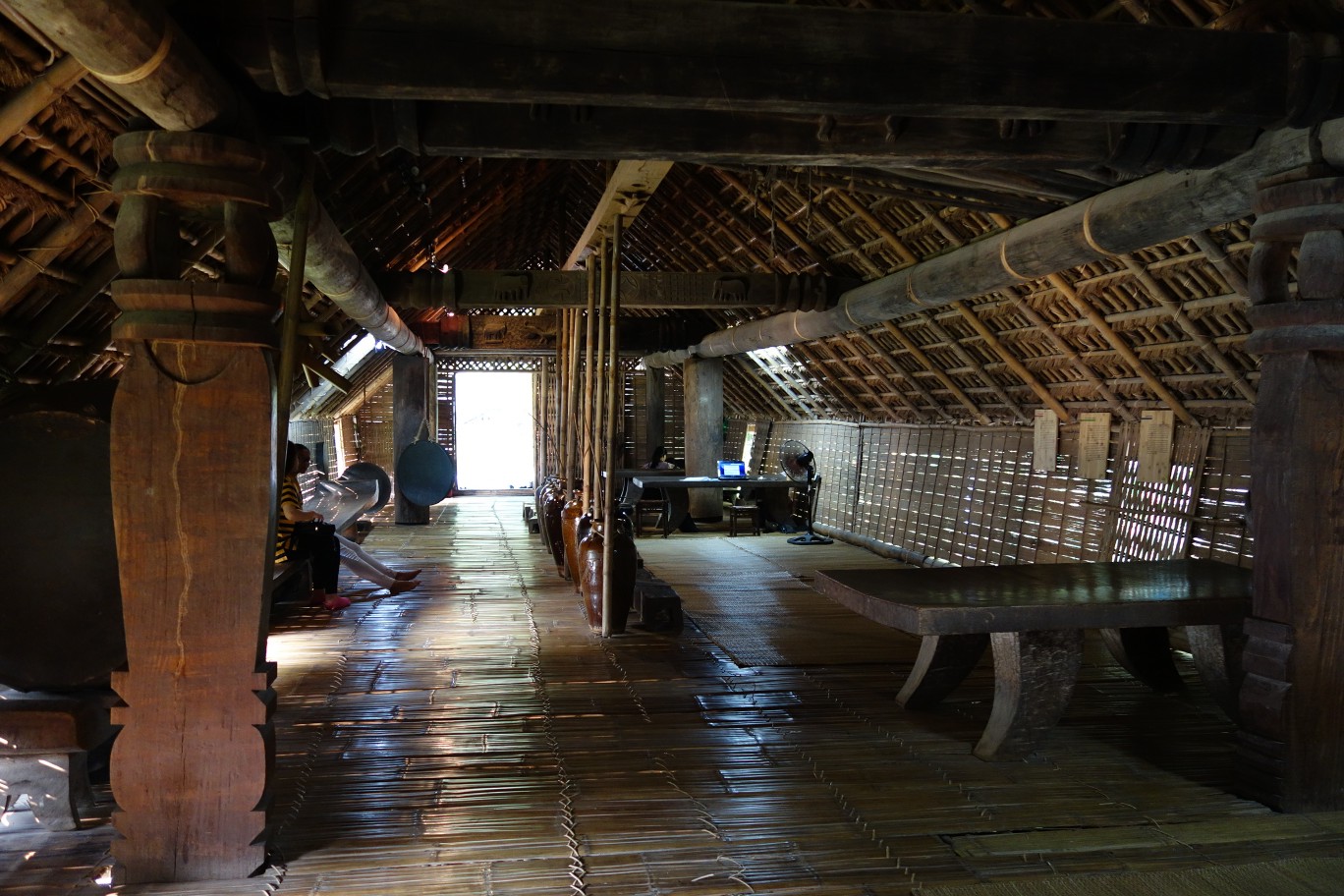
For me, this seemed like the coziest house of all. It was a good place to rest for a bit after walking around the museum for a long time.
Nha mo Giarai
This one is not just any house. It’s the house of the dead! Yes, this is actually a tomb!
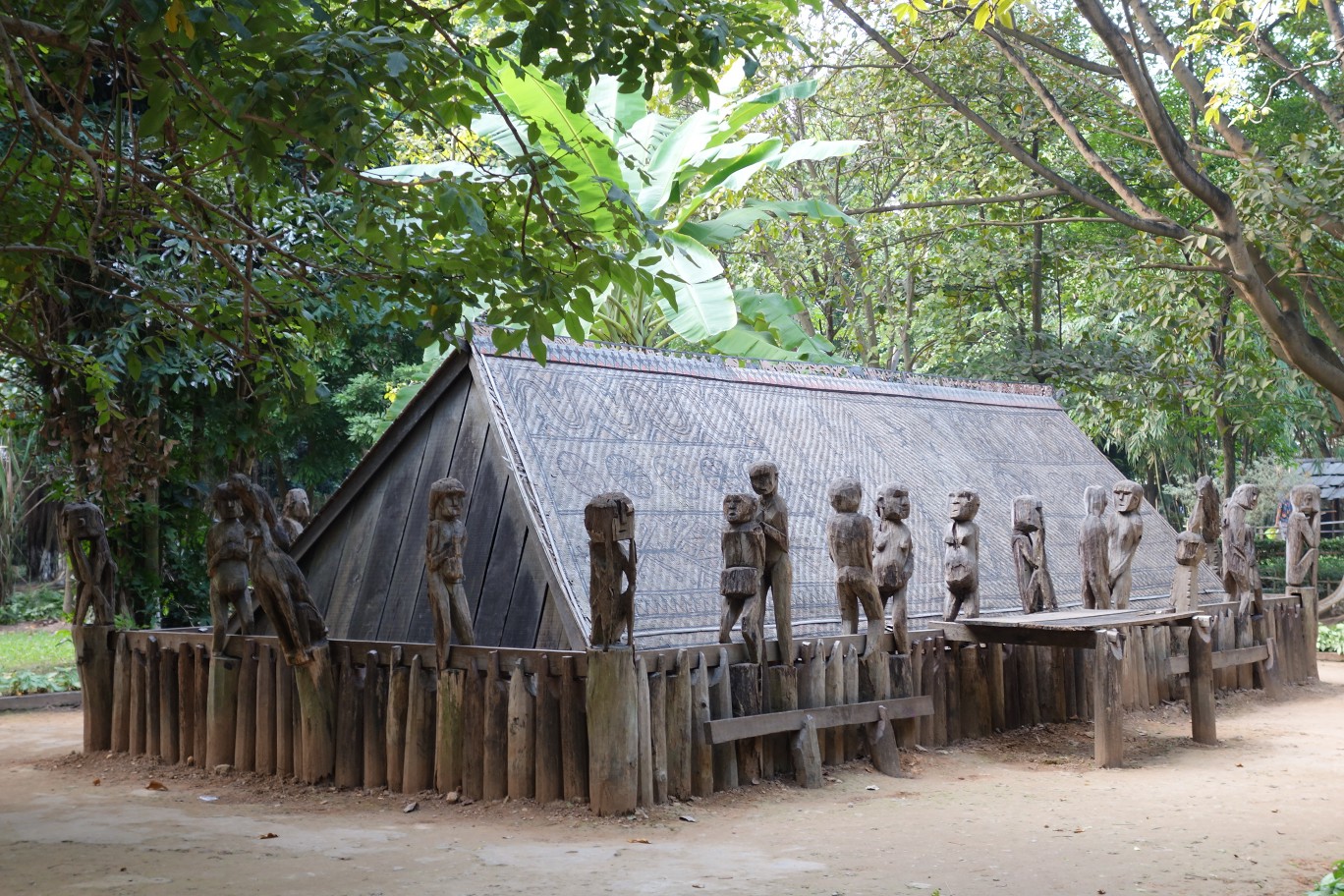
The wooden human figures symbolize the different stages of life — from creation to birth, to death and beyond.
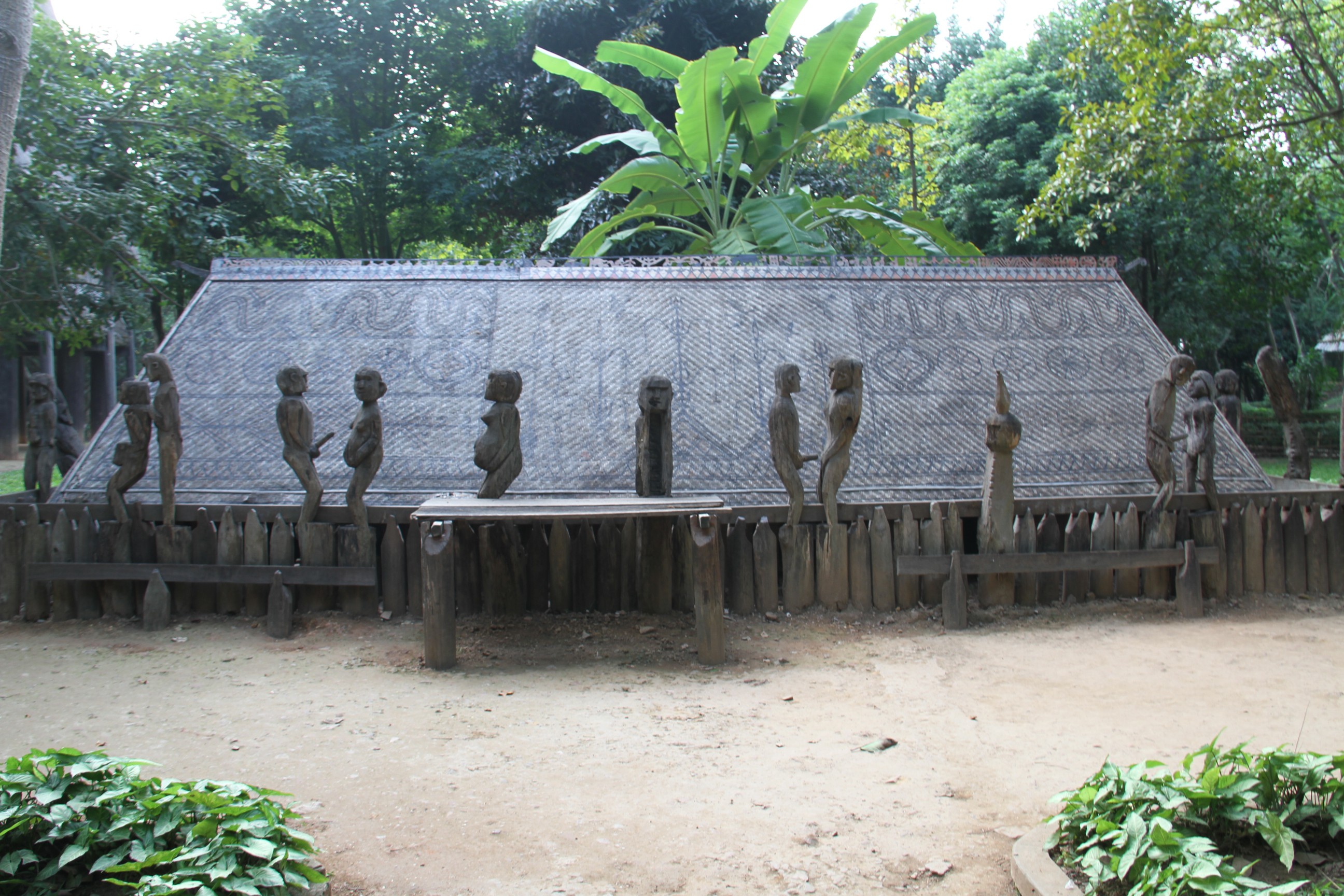
Try not to be distracted by the naughty-looking statues! (Although how could you not be?)
Nha mo Cotu
Nha Hmong
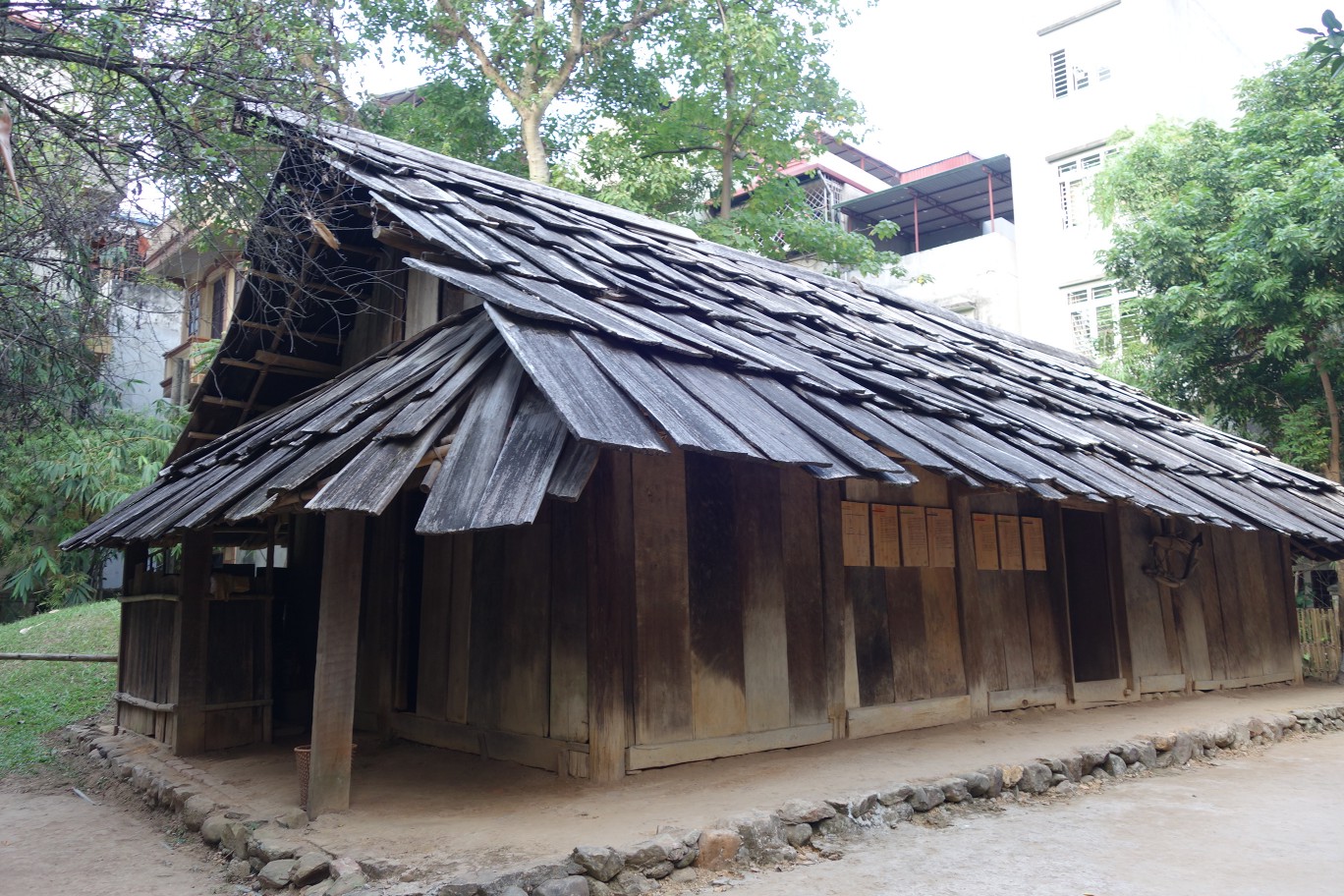

Unfortunately, I don’t remember much about the last two houses we visited! Sorry, I was too tired and hot already at that time!
Is the Hanoi Museum of Ethnology worth a visit? It’s a ‘yes!’ if:
- You love learning about history and culture
- You are fascinated with architecture (it’s pretty cool checking out how the different houses are made!)
- You like photos (Lots of interesting subjects to take photos of!)
- You have plenty of time to spare (You could spend the whole afternoon here because it’s really big!)
- You enjoy walking around (There will be plenty of walking!)
- You are traveling with kids (They will have a blast exploring the houses for sure!)
Vietnam Museum of Ethnology:
Address: Nguyen Van Huyen, Hanoi
Opening hours: Everyday except for Monday, 8:30-17:30
Website: http://www.vme.org.vn
Entrance fee: 25,000 (or USD 1.20); camera fee: 50,000 (USD 2)
More information on the Museum of Ethnology (taken from the official website):
Phone Numbers:
Monday – Friday: + 84-4-3836-0352
Saturday – Sunday: + 84-4-3836-0350
Reception / Museum Tours: + 84-4-3756-2193 (except Mondays)
Ticket: + 84-4-3836-0350 (except Mondays)
Communication and Public Relation: + 84-4-3756-2193 (except Mondays)
Educational Activities: + 84-4-3756-2192 (extent 121, except Mondays)
Museum Guard: + 84-4-3836-0350
Administration: + 84-4-3756-2192 (extent 118, except Saturdays and Sundays)
Fax: + 84-4-3836-0351
ADMISSION
40,000 VND/person
DISCOUNT
- Vietnamese students: 15,000VND/student (valid student card required);
- Pupils (age 6 – age 18): 10,000VND/pupil;
- Beneficiaries of preferential policies on cultural enjoyment (elder people, severe disabilities etc.): 50% of ticket price;
- Minority ethnic people: 50% of ticket price (valid identity card required).
FREE ADMISSION
- Children under 6 years old;
- Special severe disabilities;
- ICOM members (valid membership card required);
- Friends of the Vietnam Museum of Ethnology (valid card required);
- Journalists (valid journalist card required);
- Donors.
TOUR GUIDE
- Vietnamese indoor tour guide: 50,000VND
- Vietnamese outdoor tour guide: 50,000VND
- Vietnamese tour guide for all exhibitions: 100,000VND
- French/English indoor tour guide: 100,000VND
CAMERA
- Tourist camera: 50,000VND/camera
♥♥♥♥♥♥♥♥♥♥♥
More stories from our Hanoi trip on: #PuffAndFluffHANOImoon
